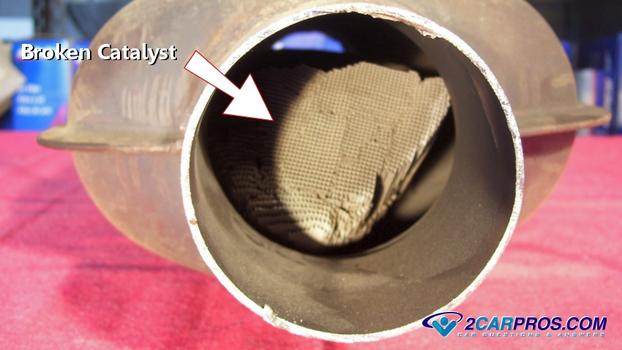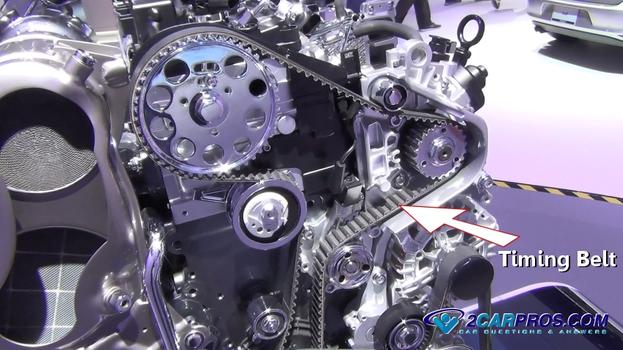Engine Has Low Power Output
Low Power
How To Troubleshoot Engine Low Power Issue
Helpful Information
Computer sensors operate within a prescribed specification, if these sensors become weak they can effect the engine power output without the computer detecting a problem, these half broken sensors need an data input scan tool to be detected and will cause havoc until replaced.
Step by step guide on how to troubleshoot and repair an automotive engine that has low power output, this information pertains to combustion engines.
Difficulty Scale: 5 of 10
Begin with the vehicle on level ground, engine off, in park with the emergency brake engaged.
Step 1 - An engine's air filter is meant to pull impurities and can become clogged resulting in low air intake and low power. Learn More

Removing Air Filter
Step 2 - If engine problems exist and the service or check engine light is on, use a code reader to retrieve the codes to make necessary repairs. Learn More

Check Engine Light
Step 3 - If an engine is running poorly it can result in low engine power output, an engine tune up or fouled spark plug can cause engine misfire performance issues. Learn More

Fouled Spark Plug
Step 4 - The fuel system filter is designed to remove particles from the fuel itself, when a filter becomes plugged the system fails to supply pressure to the injectors, this filter must be replaced at regular intervals to maintain proper performance. (Note: Some vehicles fuel filter is inside the fuel tank and is non serviceable.) Learn More

Replacing Fuel Filter
Step 5 - A fuel pump is designed to supply a consistent pressure to the fuel injection system, when this pump becomes weak it can lose this pressure resulting in low fuel pressure causing the aforementioned low power output. Learn More

Fuel Pressure Reading
Step 6 - A catalytic converter is designed to incinerate excess fuel remnants resulting in cleaner engine exhaust output gasses, if the unit bcomes clogged or broken the engine's power will be reduced while restricting exhaust flow. Learn More

Broken Catalyst
Step 7 - A mass air flow sensor measures the volume of air consumed by the engine at any giving time, this sensor is subject to contamination which can effect the data feedback to the computer causing low engine power. Learn More

Mass Air Flow Sensor
Step 8 - Engine compression is directly related to engine power output if this compression is low due to wear or improper crankshaft to camshaft correlation the engine will have low power. Learn More

Compression Test
Step 9 - The crankshaft and camshaft must stay in proper correlation, if a timing belt or chain is improperly installed or becomes loose and jumps a tooth or two the engine will produce less power, disassemble the timing cover to check timing marks.Learn More

Timing Belt Engine Cutaway
Step 10 - This problem pertains to older engine that utilize an adjustable distributor. If the timing is adjusted too far advanced or retarded (in front or behind the timing mark) in relationship to the engine crankshaft engine will have low power output. To check the ignition timing adjustment a timing light is needed. If the engine timing is way off ( 20 degrees or more ) check the timing belt or timing chain, crankshaft camshaft correlation. Learn More
Step 11 - Occasionally the engine will feel like it has good power, but its not getting to the wheels, this condition is caused by transmission slip. Both, standard and automatic transmissions retain a clutch or clutches that when become worn through usage, can lose their grip and slip causing heat due to the transference of energy developed from the engine while failing to propel the vehicle. Learn More
Step 12 - The engine ignition timing is based off of the crankshaft harmonic balancer, which can become loose causing the crankshaft woodruff key to dig into the balancer timing (location) slot causing the timing to become retarded causing low power, to check for this condition remove the harmonic balancer and inspect. Learn More

Removing Air Filter

Check Engine Light

Fouled Spark Plug

Replacing Fuel Filter

Fuel Pressure Reading

Broken Catalyst

Mass Air Flow Sensor

Compression Test

Timing Belt Engine Cutaway
Comments
Post a Comment